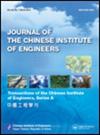高雷诺数流体速度场重构的PIV算法研究
IF 1.2
4区 工程技术
Q3 ENGINEERING, MULTIDISCIPLINARY
Journal of the Chinese Institute of Engineers
Pub Date : 2023-06-29
DOI:10.1080/02533839.2023.2227863
引用次数: 0
摘要
针对高雷诺数湍流运动图像匹配中的畸变和旋转问题,根据仿射变换的性质,利用对数极坐标变换,逐行对图像进行相关计算,实现了湍流粒子图像的匹配,并开发了一种匹配算法(紊流粒子图像匹配,简称:TPIM)对具有仿射变换和刚体变换的粒子图像对:通过移动解释窗口,算法不再受粒子位移的限制;根据图像在对数极坐标系中的角度设置仿射线,以仿射线为匹配单元,实现了不同变换因子的解耦;根据对数极坐标变换中非均匀采样的特点,在不丢失图像信息的原则下,通过合理设置图像掩模和采样率,建立图像金字塔和相对坐标系,将算法复杂度降低到原算法的15%左右。不同类型粒子图像的实验结果表明,TPIM算法的匹配精度可以达到99%以上。本文章由计算机程序翻译,如有差异,请以英文原文为准。
Research on PIV algorithm for reconstruction of velocity field of fluid with high Reynolds number
ABSTRACT For the problems of distortion and rotation in the image matching of turbulent motion with high Reynolds number, according to the nature of affine transformation, using log-polar coordinate transformation, the matching of turbulent particle images is achieved by performing correlation calculations on the image line by line and developed a matching algorithm (Turbulent Particle Image Matching, abbreviation: TPIM) for particle image pairs with affine transformation and rigid body transformation: by moving the interpretation window, the algorithm is no longer restricted by displacements of particles; by setting the affine lines according to the angle of the image in the log-polar coordinate system and using the affine line as the matching unit, the decoupling of different transformation factors is realized; according to the characteristic of non-uniform sampling in log-polar coordinate transformation, based on the principle of not losing image information, by reasonably setting the image mask and the rate of sampling, establishing the image pyramid and the relative coordinate system, the algorithm complexity is reduced to about 15% of the original. The experimental results of various types of particle images show that the matching accuracy of the TPIM algorithm can reach more than 99%.
求助全文
通过发布文献求助,成功后即可免费获取论文全文。
去求助
来源期刊
CiteScore
2.30
自引率
9.10%
发文量
57
审稿时长
6.8 months
期刊介绍:
Encompassing a wide range of engineering disciplines and industrial applications, JCIE includes the following topics:
1.Chemical engineering
2.Civil engineering
3.Computer engineering
4.Electrical engineering
5.Electronics
6.Mechanical engineering
and fields related to the above.

 求助内容:
求助内容: 应助结果提醒方式:
应助结果提醒方式:


